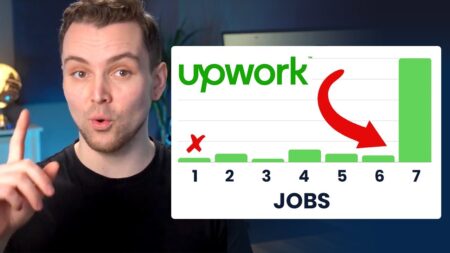A freelance retainer is by far the best way to stabilize your income as a freelancer. But figuring out how to structure your pricing as a freelancer can be difficult when you’re first starting out. Charge too little, and you’ll attract low-quality clients, or won’t be able to support yourself on your freelance income. Charge too much, and you’ll have a hard time winning bids.
On top of that, there are different ways to even think about billing–project based, hourly, per word, etc.
So which way is best?
Honestly, they all have their place, but in order to reach your goal of recurring revenue you’ll want to learn how to set up a freelance retainer for your business.
Read on to find out what a freelance retainer is and how you can start implementing it into your pricing structure.
What is a freelance retainer (or what is a monthly retainer)?
A freelance retainer is a way of pricing your work on an ongoing basis, instead of transactionally after each project is completed.
Clients are paying to retain your services–they are essentially reserving a time slot with you for whatever work they may need done.
Retainers are a great way to guarantee you receive a set amount of income at a predictable time.
That’s not the only benefit, either. Working with long-term clients gives you the benefit of developing relationships and watching your hard-work contribute to the growth of other businesses. Additionally, as you prove your worth time and time again, the potential for strong referrals grows.
A freelance retainer can be great for clients, as well. Once you are familiar with their brand, style, preferences and needs, they won’t want to waste time and money training a new contractor.
How a freelance retainer works
The way you set up your freelance retainer will depend on your clients and the types of services you provide. A writer won’t have the same deal in place as a web designer, for example.
Let’s look at some hypothetical ways you could deal with a freelance retainer in order to maximize the benefits. You can also review our in-depth guide to freelance retainer agreements for more information.
Freelance Retainers for Web Designers
Freelance retainers are well-suited to web design. This is because websites need constant maintenance. Rather than spring into action every time a client needs a bug fix, you might suggest a retainer agreement.
You could offer your client a set amount of updates along with monthly AB testing, analytics analysis or SEO work to add value to their site. In exchange they pay you a monthly retainer fee on the first day of the month. You get income you can count on, and they get consistent improvements to their site.
Freelance Retainers for Writers
Writers often work on a per project basis, or charge a set rate per word. Some writers build up the kind of clientele that needs a lot of content every month.
Rather than trying to predict when deadlines will come up and schedule their time accordingly, writers might put in place a freelance retainer and offer those clients 4 articles each month for a single price. This way, they are able to make space in their calendar for those four articles without worrying that an unexpected need will pop up, and their clients know they will get those four articles every single month.
Freelance Retainers for Designers
For designers, retainers can be a bit tricky. Design work is sometimes sporadic, and providing the kind of value that lends itself to a retainer agreement may require some creativity. But in some situations, a monthly or quarterly freelance retainer agreement can be a win-win.
Instead of a predetermined number of projects, which is fairly unpredictable for designers, a predetermined number of hours reserved for a particular client can be a good way to structure a design retainer.
Consulting Monthly Retainers
If you work as a consultant—think PR, marketing, business coaching, SEO, etc.—monthly retainers are fairly common. In this case, you might offer a set number of hours, similar to a designer, or you may simply be on-call for whatever needs come up in the course of the month. An on-call agreement should still have parameters, or else be a higher rate than you charge other clients.
Retainers are typically paid monthly or quarterly. You can set it up so that all of your retainers are due at the same time, so your income is similar to a traditional job, or stagger them, so you get paid throughout the month.
How to get clients on a monthly retainer
Pitching a freelance retainer may seem daunting, but rest assured that most businesses are used to this type of agreement with contractors. If you sell it right, you can be one of them.
The trick is to craft the perfect retainer pitch. You need to offer your client the kind of value that they can’t turn down, in exchange for the stable income you need.
There are a few different ways to do this. You can offer a discounted hourly rate, added-services, additional consulting services, you might choose to give them an extra hours rollover option, or something else.
What it all comes down to is the client. What do they really need? How can you fill that void? You are the expert here, so what does a successful strategy look like for clients that are seeking you out?
Once you’ve come up with a strategy, give your client options. Show them what a retainer agreement looks like next to the project based solution they are asking for. With the value add you’ve come up with, it should be a no-brainer for them to switch over.

Some smaller businesses may be resistant to the idea of a freelance retainer. That’s ok. Even a small retainer makes a difference in the security of your business, so if you’re looking for that stable income, consider offering a limited number of services for a very small, ongoing monthly retainer fee. Alternatively, you could suggest a trial period to see how they feel about the value for their money.
Be sure that once your client agrees to the retainer, you come up with a solid freelance retainer agreement that will outline the details and inclusions so that the client expectations are set and payment terms are met.
But if the freelance retainer pitch doesn’t land with some clients, don’t hesitate to take on project-based work if it’s a good fit. Sometimes the best way to convince clients that you are worth having on retainer is to show them just how valuable your work is.
When not to use a freelance retainer
There are a lot of benefits to billing through retainers.
However…

Just as with most things in business, there are downsides, as well.
Retainers create stability, but they can limit the way you do business. You are agreeing to a set amount of work, at a set price. Once you’re locked into that price, it can be difficult to raise rates.
It can also be hard to take on more work, since you’re committed to those hours. When you sign a retainer, you are essentially guaranteeing that the work for that client will come above any one-off projects.
There are definitely some situations where using a freelance retainer may harm your business in the long run. Here are just a few.
1. When a client is high-maintenance
If you have already worked with a client and you know that they want projects done quickly, have a tendency towards scope creep or endless revisions, a retainer is not a great idea.
You’ll wind up losing money because projects for this client will take up all your time and you’ll be unable to charge extra for your work.
2. When you’re ready for significant growth
Scaling a freelance business is tricky. There’s only one of you, so at a certain point it’s hard to take on more projects, and your only options are to hire people or raise your rates. While it never hurts to pitch the idea, at this point, insisting on a freelance retainer may not be the right move.
You’re looking for higher-paying, high quality clients. It may make sense to keep a few of your most loyal retainer clients on and let the rest go while you hustle in order to level up your business. After you’ve impressed a new caliber of clients, you can revisit the idea of consistent retainers.
3. When you’re already booked
If you are working late into the night, struggling to meet deadlines, and you aren’t getting the down time you need to recharge your creativity, this is not the time to take on a new retainer client.
It may be the time to put some money in the bank, then evaluate which clients are worth keeping and which it might be time to let go so that you can make room for a high-paying retainer client and give yourself some breathing room.
Where to start with freelance retainers
Some freelancers need a bit more structure to their operations. If you have a family relying on your income, if you have non-negotiable expenses month to month, or if you just have a lower-risk personality, it makes a lot of sense to get a freelance retainer in place where you clients pay you a monthly retainer fee.
Having that consistent amount land in your bank account monthly or quarterly can really give you the freedom to do your best work, then spend more time evaluating your business and marketing yourself to other potential clients.
In the right situation, and with the right pitch, a freelance retainer might be just the thing you’ve been looking for to live the life you’ve always wanted.
If you’re serious about making progress with your freelance retainer and recurring revenue, you should join our 5-day recurring revenue challenge where we’ll teach you how to come up with a recurring revenue idea, build a business model around it, and pitch it to your clients in a way they can’t resist.
Keep the conversation going...
Over 10,000 of us are having daily conversations over in our free Facebook group and we'd love to see you there. Join us!




